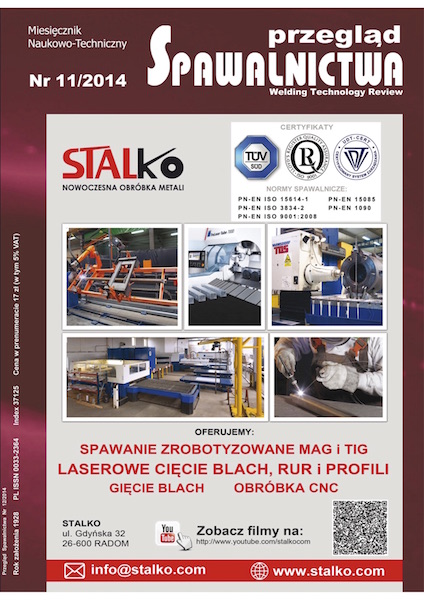Diagnostyka konstrukcji betonowych metodą ultradźwiękową pośrednią; Concrete construction diagnostics by indirect ultrasonic method
Main Article Content
Abstract
W pracy przedstawiono wyniki badań betonu wykonane metodą ultradźwiękową pośrednią, zgodnie z PN-EN 12504-4. Badania wykonano opracowanym modułem UIR skanera do badań ultradźwiękowych. Przeanalizowano wpływ środka sprzęgającego oraz chropowatości powierzchni. W wyniku badań stwierdzono, że moduł ultradźwiękowy UIR skanera do badań pośrednich pozwala na otrzymanie wyników porównywalnych z pomiarami bezpośrednimi. Potwierdzono możliwość wykorzystania wody jako środka sprzęgającego, co pozwala na obniżenie kosztu i czasu realizacji badań;
In the work the results of concrete testing by indirect ultrasonic method with accordanceto standard PN-EN 12504-4 were presented. Studies were performed with a worked out UIR scanner module to ultrasonic measurements. Influence of type of coupling medium and surface roughness of concrete were analyzed. The examinations of UPV module shown that ultrasonic pulse velocities evaluated by indirect method could be comparable with resultsof direct one. It was also noticed that water may be used as coupling agent, that allows reduction of costs and time of tests.
Downloads
Article Details
Creative Commons CC BY 4.0 https://creativecommons.org/licenses/by/4.0/
Welding Technology Review (WTR) articles are published open access under a CC BY licence (Creative Commons Attribution 4.0 International licence). The CC BY licence is the most open licence available and considered the industry 'gold standard' for open access; it is also preferred by many funders. This licence allows readers to copy and redistribute the material in any medium or format, and to alter, transform, or build upon the material, including for commercial use, providing the original author is credited.
References
A. Lorenzi i in, "Ultrasonic pulse velocity analysis in concrete specimens", IV Conferencia Panamericana de EnD, Buenos Aires, 2007.
J.T. Petro, J. Kim, "Detectionof delamination in concrete using ultrasonic pulse velocity test", Construction and Building Materials, 26, 574-582, 2012.
M. Krause i in, "Ultrasonic imaging of concrete members using an array system", NDT & E International, 34 (6), 403-408, 2001.
B. Stawiński, "Zastosowanie metody ultradźwiękowej do badania wytrzymałości betonu na rozciąganie", 31. Krajowa Konferencja Badań Nieniszczących, Szczyrk, s. 115-118, 2002.
N.K. Choudhari i in, "Evaluation of elastic moduli of concrete by ultrasonic velocity", National seminar of ISNT, Chennai, 2002.
PN-EN 12504-4: 2005 Badania betonu. Oznaczanie prędkości fali ultradźwiękowej.
A. Garbacz, "Nieniszczące badania betonopodobnych kompozytów polimerowych za pomocą fal sprężystych ocena skuteczności napraw", Oficyna Wydawnicza Politechniki Warszawskiej, Warszawa 2007.
A. Garbacz, T. Piotrowski, G. Adamczewski, K. Załęgowski, "UIR-skaner mobilny, zintegrowany skaner do diagnostyki elementów betonowych za pomocą metod nieniszczących", Raport z grantu NCBiR, 2014.
